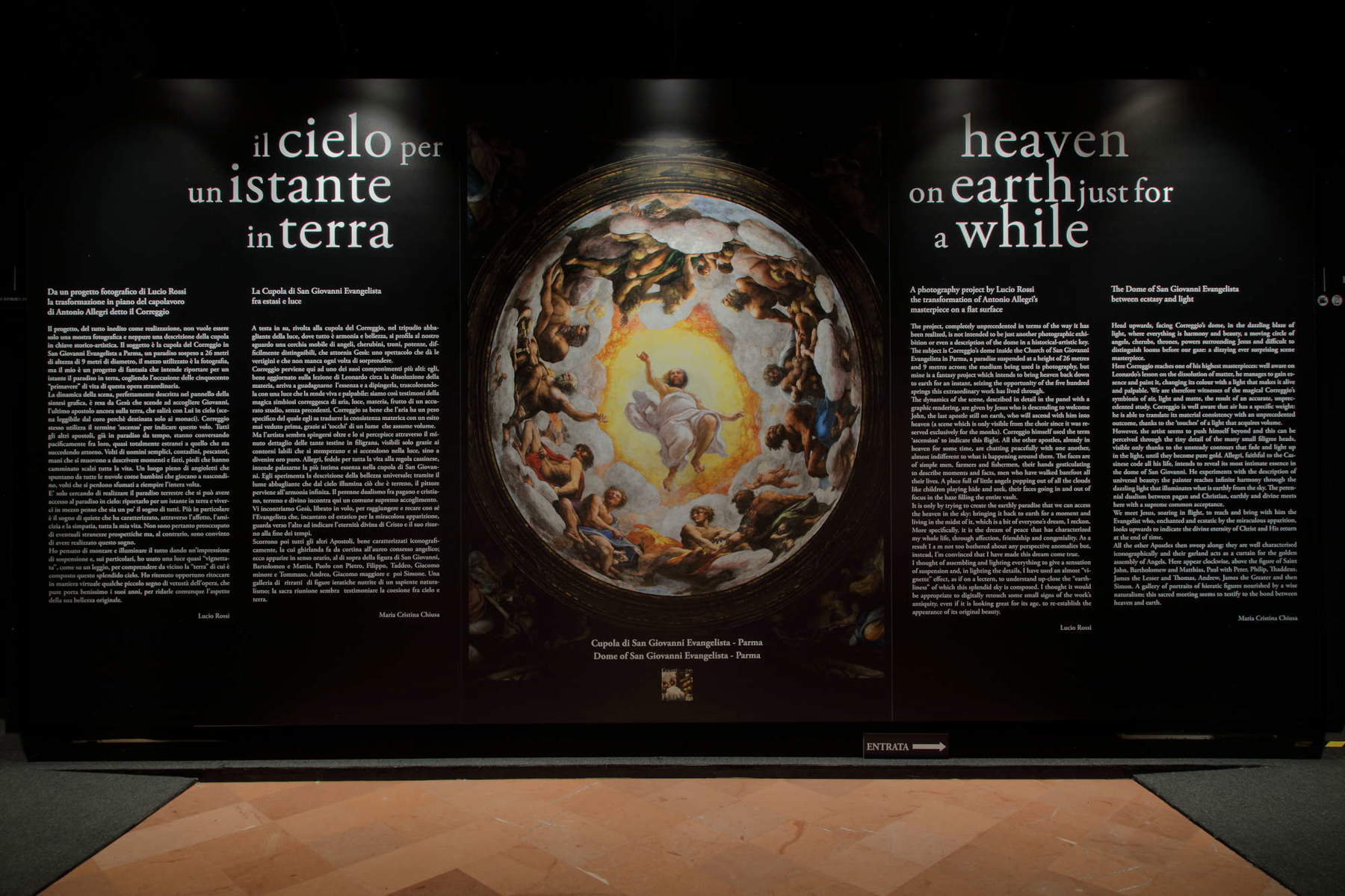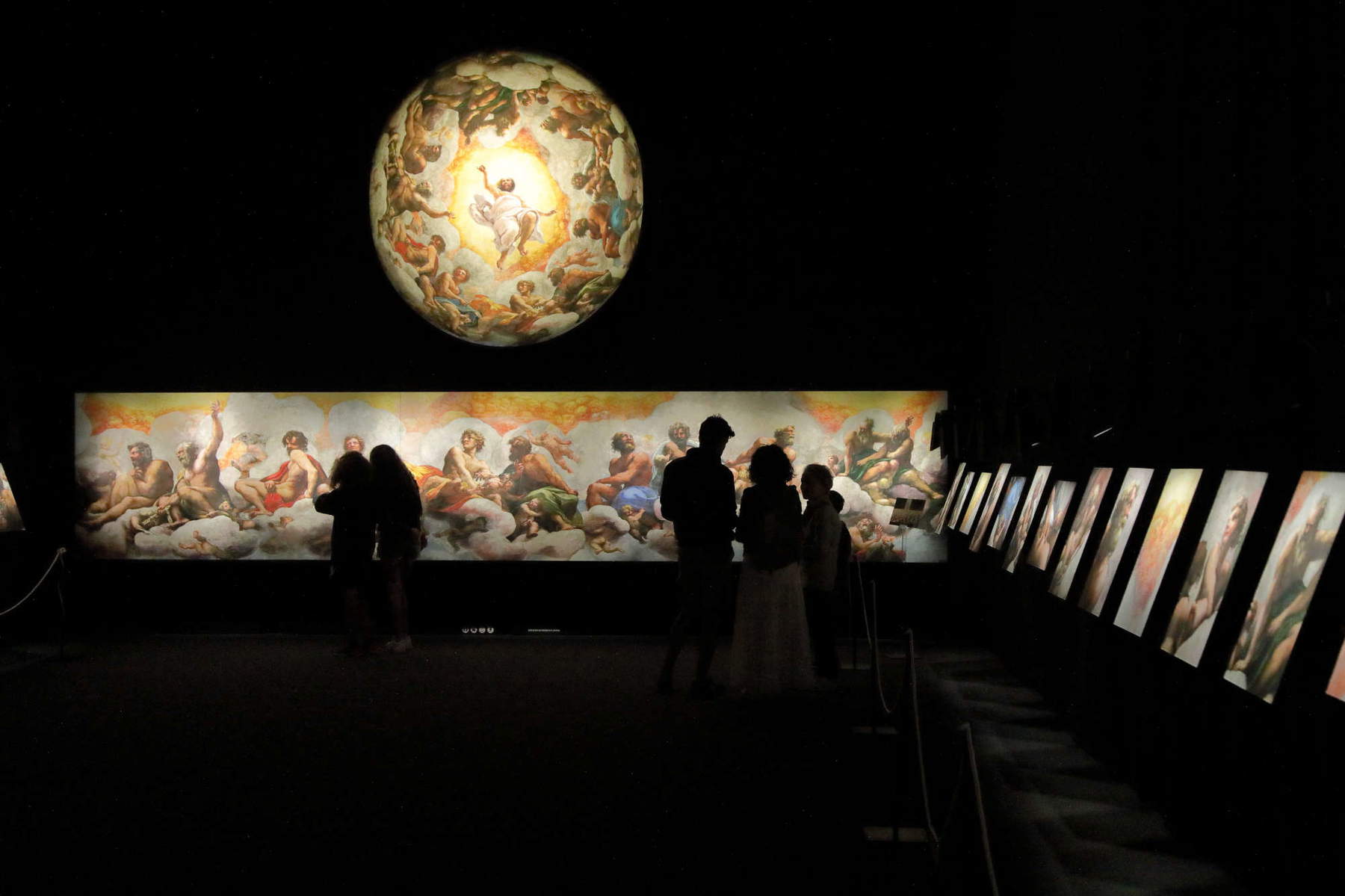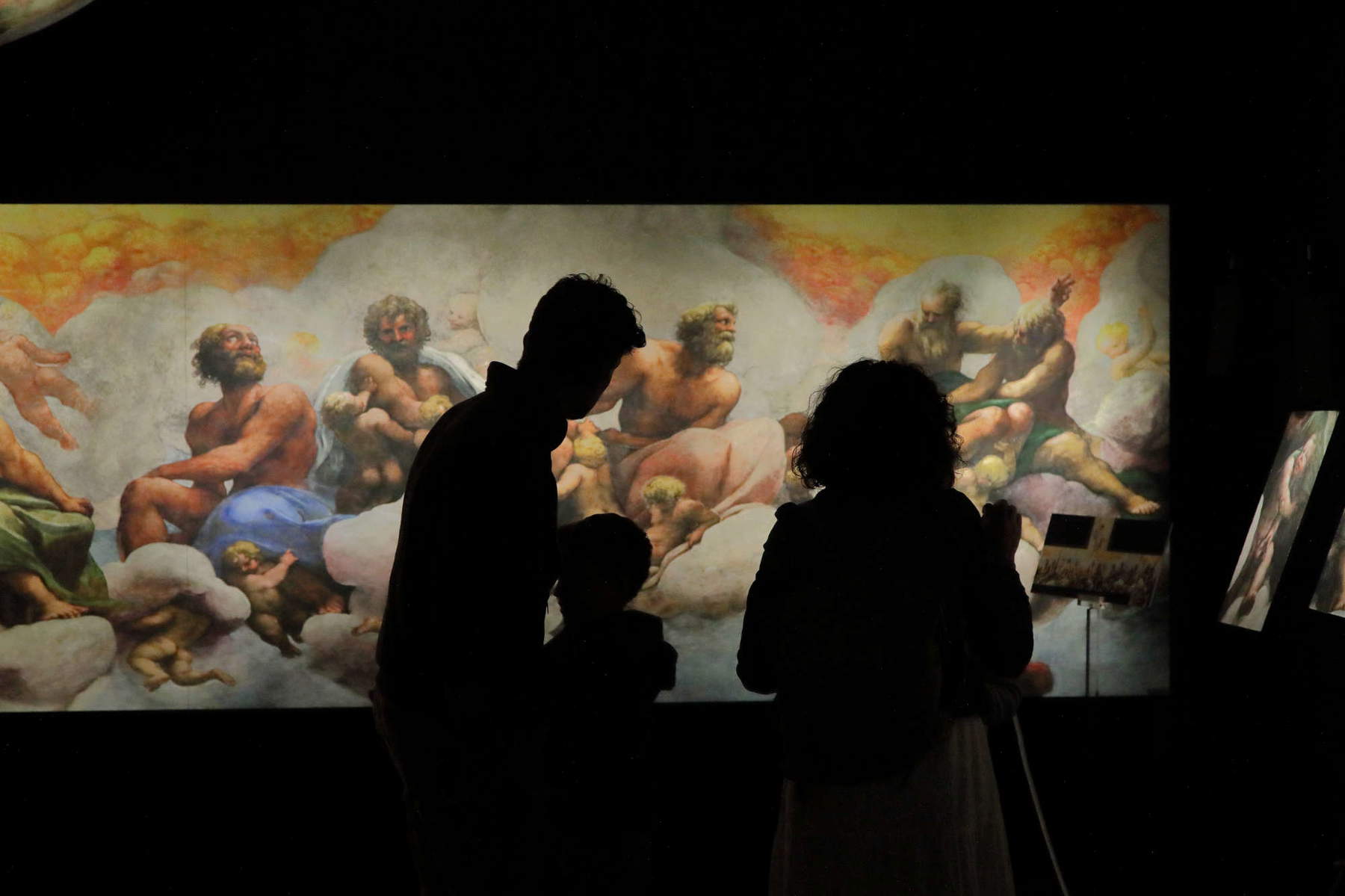The walk in the sky. Correggio's prodigy in Parma in Lucio Rossi's photos.
Yes, to Correggio some of those pious monks of the Abbey of San Giovanni in Parma, in 1519, might well have advised him to depict an Ascension up there, in that white dome just finished “more romano”: so much so that the still young painter, just out of the astonishing trial of the Camera di San Paolo should have written “son qui per l’Ascensio.” But Allegri possessed, well blended, both a deeply religious spirit and a very clear ability to translate the highest themes iconographically. That is why within the very new abbey church had taken over in him - certainly in agreement with the local Abbot - a cogitation filled with sacramental substance that had to lead to an extended, Eucharistic concept of the entire basilica. Let us not forget that our Anthony came from a long factual and spiritual familiarity with Gregory Cortese - the greatest friend of Pope Medici, Leo X - who had turned down a secure and rewarding career in the Roman Curia to take himself to the Monastery of St. Benedict in Polirone, the most remote and decentralized prayer retreat within the distant Lombard valley, up there where Virgil had sung in sublime verse of the rural planting, the expanse of which later, with unthinkable gasps, Carducci would call “the divine of the green silent plain.” Effectively, after a few years, ecclesiastical events would call Cortese to be a leading figure in Catholic reform as a great theologian and cardinal.
In depth, the thought of the monk Gregory and Benedictine spirituality involved Correggio and his pictorial imagination by posing to him the question of the entire sacredness of the ecclesiastical encasement of St. John’s and making him understand that the dome had to be a beating heart for those participating in the liturgy and prayers: the task was to bring heaven to earth and spread it to souls. Thus even the figure of Christ himself, desired in the center of the dome, was to come and not leave!
Correggio’s own figurative ability also told him that an Ascension would require the turn of the twelve standing apostles, seen from below, curved and compressed within the architectural cup without a high drum, and perhaps dressed as fishermen (no paludamenti for the limpid Po Valley painter): even Christ would have to see himself from below, fleeing to heaven. Then no! If the basilica was to be the place of the encounter of souls with the incarnate God, the idea of the divine descensio and the concordant intimate Eucharistic encounter would forcefully ensue. The whole program of the dome and nave was appropriately arranged according to the mysticism of sacred places: the upper part of the nave became expressively Christological (the frieze of sacrifices), while the dome signified heaven itself. There, on the crown of clouds lodged the apostles, seated in expectation (the etimasia), naked to glorify their own bodies that had undergone martyrdom, and chorally calling, in consonance with the appearing Jesus, their brother John to infinite bliss. Marvelous was the glory of Christ and his blazing figure, surrounded, as we had already written, by the divine radiance of the innumerable angelic choirs.

The plenitude of the inebriating celestial “status” of the entire dome had greatly impressed Lucio Rossi who had set himself at length to regard the ecstasy of the celestial realm with a great question in his heart: how to bring there our senses, indeed, our very bodies into the presence of it? A joyous ordeal, cherished and cultivated in the mind and then visually grasped, ideally dissected, and finally experienced with reliance on the more surgical tools of photography: at first reluctant, they then disposed themselves with cautious docility to the hands of their conductor; and we must say this so that the final transposition of the round and curved fresco, a masterpiece of Correggio’s heroic foreshortening, took place with an artisan wisdom and patience, figure by figure, ratio by ratio, with Lucio’s own hands until the absolutely correct flat portrayal of the stupendous concave scene. Even the particular paper is extraordinarily capable of bringing back the precise effect of the fresco.
Lucio Rossi has thus come to photographically demonstrate Correggio’s first mental idea, and he now offers it to us in the spectacular remake carried out within the great refectory of the Monastery of San Giovanni, thanks to the convinced help of the Municipal Administration of Parma, the conscious welcome of the abbot and the religious, and the support of distinguished supporters.






Procedures having been found, the entire apostolic circle and the angelic infinitude of the dome were brought into the presence of direct human enjoyment, placid and dilutable with no more problems of distance, circuitous pursuits, visual acrobatics and varied illuminations. This was followed by the search for a setting of choral reception and the greatest possible ease for each person. It is not possible to restrain oneself from joy having at one’s disposal all the creative soul and all the art of Correggio that have realized the sweetest, almost superhuman desire to be in heaven and here to experience an unspeakable moment with Jesus and the Apostles.
We would like to conclude by bringing to attention the fact that many citizens of the Po Valley area are responding in a truly enthusiastic way to the inventio of this very new way of presenting a sublime work, known in the world but objectively impervious to approach. Now there will be no shortage of national and certainly international audiences, well aware of the treasures of Parma, but also well aware that in the mid-Padana area there are Correggio treasures in San Benedetto Po, in Correggio in the fine Museum, and in the Galleria Estense in Modena.
All images appearing here are by Lucio Rossi, and all rights are reserved by FOTO R.C.R. di Rossi Lucio & C. S.a.s. Thanks for the images go to dear Lucio. Other important thanks to Marzio Dall’Acqua, Oscar Riccò and Renza Bolognesi.
Warning: the translation into English of the original Italian article was created using automatic tools. We undertake to review all articles, but we do not guarantee the total absence of inaccuracies in the translation due to the program. You can find the original by clicking on the ITA button. If you find any mistake,please contact us.




























